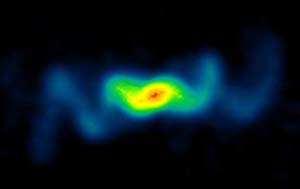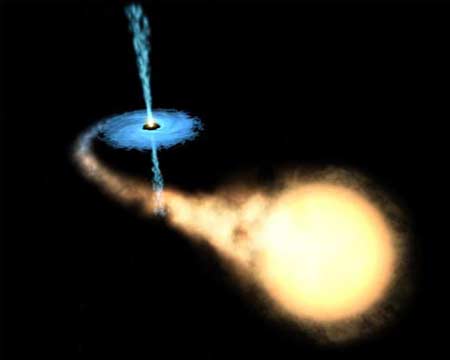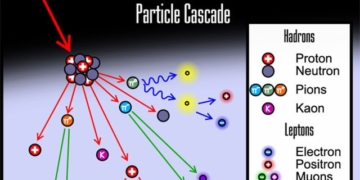In 1978, astronomers discovered a strange celestial object named SS433. It is located near the star Altair, a member of the Milky Way galaxy, about 11,000 light-years away from Earth. In fact, this star had been observed 50 years earlier, but at that time it was regarded as just an ordinary star, not particularly noteworthy. Later, it was added to the star catalog of Stephenson and Standuleak, classified as number 433, hence the abbreviation SS433.

(Image: chara.gsu)
SS433 has become mysterious because its spectrum shows wide red and blue shifting hydrogen lines. Generally, the cause of spectral shifts is the movement of the celestial object. Red shifting means it is moving away from us, while blue shifting indicates it is approaching us.
 |
The Electric Wave Model of SS433 |
The spectrum of SS433 indicates that part of its material is moving towards us at a speed of 30,000 km/s, while another part is receding at a speed of 50,000 km/s. Such movement of a single celestial body in two opposite directions is not possible for an ordinary star, which is why SS433 continues to intrigue astronomers.
In September and November of 1977, the red and blue shifts of SS433 became increasingly wide, but by the end of the year, they gradually narrowed. Long-term observations revealed that the red and blue shifts occur in cycles. Many astronomical discoveries start from the periodicity of certain celestial bodies, leading scientists to speculate that SS433 could represent new mysteries of the universe.
So, what is the phenomenon of SS433? To this day, people are still guessing. Some believe it was once a black hole, while others suggest it is a celestial object ejecting material in two opposite directions.

(Image: blackholes.stardate)




















































